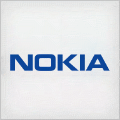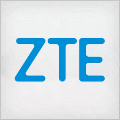Nokia Lumia Icon Review
| Price | |
| Euro | €400 |
Nokia Lumia Icon Review
![]()
Introduction
With the recent releases of the 1520 and 1320, with the 1520 being a big success and the 1320 also doing pretty decently in the market, Nokia has tried to bring up some of the same magic in the smartphone area, with the recent release of the Lumia Icon. The Icon, with the power of the Snapdragon 800, the 20MP PureView camera, and the size of a smartphone, is sure to rock the boat with the competition.
The device sports an AMOLED display as well as the quad-core Krait processor. Lumia Icon is launched by Nokia at an interesting time, when the competition is heating up, and with Android devices motoring ahead in the competition from Apple, it will be worth watching as to who has the number 2 position and challenges Android for the lead.
Unboxing the Nokia Lumia Icon
While unboxing the Nokia Lumia Icon, you will get everything inside the retail box that you need to get started with this phone.
- Nokia Lumia Icon device
- Charger
- MicroUSB cable connector for charging / data transfer
- Headset
Display
There is a new leader in display as far as Nokia is concerned – The Lumia Icon has outdone the 1520, and we will explain why. The display on the large sized 5 inch screen is the same as the 1520, with a 1080p resolution, and the ClearBlack tech (a set of filters for glare reduction) and like the reflectivity reduction in 1520, same is the case here too, affecting visibility outdoors. However, the device stands at 441ppi, with Gorilla Glass 3, as compared to the 1520 (367 ppi with Gorilla Glass 2). The addition in the pixels count per inch means a more detailed and sharp resolution for the users, which will be an instant hit.
The Icon has also taken it up a notch, switching the IPS LCD of the 1520 with an AMOLED display, which enhances the display with oversaturated colors that instantly catch the eye. The Icon has the Color Profile first introduced in the 1520, with the same sliders for the color temperature and color saturation. The capacitive sensors on the display has the supersensitive touch tech incorporated, which can detect touch through gloves also, always beneficial for chilly locations.
The overall contrast is pretty good, with the black levels the same highest standard as set by the AMOLED, and the rendering of colors is pretty good and the tweaking ability of the white balance and the saturation as per user satisfaction is an added advantage.
Design
The design of the Lumia series is very close to being a larger 928 or a smaller 1520, whichever people can visualize. However, the design has majority design in line with the Lumia structure. However, the rectangular shape is not helping the device win any points by subduing the cuts at the back. However, the solid metallic bezel of the device puts an added premium feel to the device, bringing a sharp look to it, but it does make the device slightly uncomfortable due to the edginess and metallic encasing, though the size is easier for the device being smaller than the 1520.
The phablet has the same Back, Home and Search button design, of Lumia, with the 2 MP, 720p front facer, along with the light and proximity sensors, with almost the entire front of the device covered in Gorilla Glass 3, including the buttons and front camera. The remaining layout is almost the same – buttons on the right side of the device, with the volume rocker, on to the power key and then the shutter key at the bottom of the side. The left side is clean, and unfortunately, the device does not contain any expandable memory slot. The nanoSIM slots tray is ejectable easily, and does not require a SIM ejection tool, residing at the top side of the device, with the 3.5 mm audio jack, while the bottom of the device has the microUSB port. It is great to see the Nokia moving ahead with the Gorilla Glass 3 after the 1520 was given the level 2, while its mid-range sibling was given the level 3 treatments.
However, the device has the 20 MP snapper with the Carl ZEISS lens and OIS, with the dual-LED flash combo being the same as the 1520. Also, the camera has been setup in a way that there is no hump whatsoever, with the camera being completely adjusted in the casing. Additionally, the 5 inch size makes it easier to fit in pockets.
User Interface & Operating System
The Lumia Icon comes with the GDR3 update same as the 1520 with the support for the Snapdragon 800 chipset and the 1080p screen, as well as a bunch of new features. The device also has the quad-core 2.2 GHz Krait, with 2 GB RAM and the Adreno 330 GPU, the same combo as the 1520. The Icon has a downside though it has only 32 GB internal memory, and memory is non-expandable. The device has the same additions of the screen orientation lock as the Nokia 1520, along with the multitasking ability, the same lock screen, redirection to camera option, ability to put art on the lock screen during music player play, or any image from Bing or Facebook, as well as the Live Tiles.
Switching between apps is also the same, as is the control level on the apps open in the background. The settings are structured the same way as well. However, we are still waiting on Microsoft to bring in a notification area as the tile size is too small for complete notifications to be displayed.
The Data Sense app, as well as the Kid’s corner are also the same as on the 1520, and we are still waiting on the enhancements to the Windows Assistant that rumors have been circling about. Still, the current Windows Assistant can provide the basics however slow it may be.
The device is easier to control with one hand due to its 5 inch screen size, though not very comfortable. However, the keyboard layout of the device is pretty neat, and dare we say, very accurate and highly responsive.
Microsoft Office, the best document viewer / editor on devices is still consistently sparkling with this device, though PowerPoint is still available in view mode. The Nokia Drive and Nokia Drive Here are also present and performing to the best.
The Groups and Rooms have been discussed in the 1520 as well as the 1320, and are present here as well.
The gallery and phone book operate the same way like the recent Lumia devices, and this includes photo transfer using the NFC as well.
Nokia is again promoting its Mix Radio service, as has been seen with recent releases of Lumia devices, with free music streaming, with a vast gallery of records as well as videos. The service is targeting competitors like Pandora, and since the users can enter a list of their favorite artists and a playlist is created automatically, it improves the likeability chances of playlists. Additionally, when users do not like the compiled play lists, they can always browse artists, and can purchase specific songs as well.
An FM is also present on board, and the device has decent audio quality, so the music listening experience will be pretty nice and has above average volume levels. Headphones enhance the audio level as well.
The Windows Phone Store is also growing at a steady pace, with apps being added regularly. Still, although it will not be catching up to the Apple Store or Google Play any time soon, most of the mainstream apps available are present for Windows Phone 8 as well.
All the segments, the applications, games and music are displayed in the similar manner. There is a featured section, where recommend apps are available, then a list of recent releases, and then onwards to the remaining apps. Nokia App Recommendations is also very helpful in getting the best app as per the requirement.
Games can be played live also, with the Games tile option (previously the Xbox Live). The games are sorted collection wise, and have the option to view the friends, their achievements and avatars, etc.
The Drive+, as well as the HERE Drive+ and Nokia Maps functions the same as they have been in the 1520, as does the Microsoft made Internet Explorer, and the Bing Search app.
Microsoft Office, with the additional option of integration with SkyDrive is present here as well, and has the same capabilities, as it had in the 1520.
Call Quality
The Lumia Icon has almost perfect call performance, with the sound very clear, and audible with the earpiece. The background noise is also silenced. Also, the volume output is pretty good, so that the volume is perfectly audible even with medium volume level.
The audio level is good on the recipient’s end as well, with pretty clear audio. The faintest of voices can easily be understood. Also, the speaker is much better than the 1320, though it is the same as 1520, which means it is only average, not that we are complaining given the competitions’ performance in this regards.
Camera
The camera on the Icon is the same that we last saw on the 1520, with the same hump-free look. Also, with the large viewfinder, it is easy to detect the off-white balance and adjust the shots accordingly. The presence of the optic image stabilization is reassuring on the device as well.
On a positive note, the dynamic range of the camera, handling the light and darkness together in shots is way better than most devices in the market. Also, the Nokia Camera app, a new app that compliments the PureView snapper and allows users to tweak around with the camera settings, is the same that was available in the 1520. The app supports managing the flash, ISO, focus, white balance, exposure compensation and shutter speed.
The camera has the added advantage of taking two snaps at a time, one in full res (19 MP or 16MP based on aspect ratio selected), and the other in 5 MP, which is commonly used for sharing. The camera can also shoot in RAW mode (the digital negative mode), and while images are four times larger in size memory wise (20 MB as compared to 4 MB 19MP snaps or 1 MB 5MP snap), this mode is becoming popular in photo enthusiasts, and captures more details than the generic JPEG format snaps.
Nokia has also worked on the image saving complaints that were popular for the 1020, to the point of bringing them to the acceptable time range. However, in case the images are being saved in both the 19MP and 5MP, it does take longer to save both.
The 5 MP shots are the ones that will be used mostly for social networking sites or sending via email, and these are by far the best 5 MP shots we have seen, with almost no noise, and great pixel detail, as well as the color reproduction and exposure. The only downside that we could find was that the white balance has to be catered to while taking the shot, or manually tweaked out of the image. The lossless zooming is here at play as well, and allows for the shots to have the same level of sharpness, detail and colors while being closer to the target.
In the dark, without the flash, the shots are still pretty detailed, with a lot of fine detail that may be missed by most competitors, though with some luminance noise – the result improves slightly due to noise reduction in the 5MP shots. However, the details are softer and less pronounced. For the shots requiring the flash to compare the xenon versus the dual LED flash, we expected the 1020 xenon flash shots to completely outperform – the results, to our surprise, were pretty decent. Though the xenon is still better than the dual-LED, the dual-LED also performed at a very nice level.
The device also has the Smart Camera Suite, which allows photo editing and effects from within the camera interface – it even allows the usage of a removal tool to remove moving objects, change faces of those in photo, and selection of the best shot from a group of shots. A group of shots can be taken, which is actually a short burst of 10 photos.
Nokia offers a good amount of snapping modes in the shape of lenses and those like burst, action shot, motion focus, panorama, cinemagraph, as well as a number of new lenses like the hugely talked about Refocus lens are all present on the device. The Refocus lens can take several images of the target at different focus points and allows the users to change the image focus in an interactive manner.
Video capture on the Lumia Icon has the added benefit of oversampling and Optic Image Stabilization, as well as zoom enabled during recording which can go up to 3 times in the 1080p mode. The 1080p mode has 30fps, while the 720p can also capture at 30fps, as well as 24fps and 25fps. However, 60fps mode is not available on the device. The OIS makes the camera movements look professional, and reduces shakiness. The reduced panning provides a classy viewing.
For better sound, Nokia has four mics, as already mentioned, which record 256kbps stereo sound at 48 kHz, along with Rich Audo Recording for distortion removal and Audio Bass Filter to remove low frequency noises.
However, while the snapper is way above the competition, the video capturing, as was the case with the 1520, is just average – even with the enhanced sound recording, the video capture on the Galaxy Note 3 is better. The 4K absence, which is the next big thing, also does not help.
Connectivity
The device has GPRS/GSM/EDGE, along with quad-band 3G with HSPA at 21.1 Mbps down and 5.76 Mbps uplink, and 4G LTE which has 150Mbps down and 50Mbps uplink. The device also has GPS with A-GPS support and GLONASS, like the 1520.
The local connectivity is present via Wi-Fi, hotspot, DLNA, and stereo Bluetooth 4.0, which also supports file transfers. The NFC is also present, allowing file transfer to devices of different brands and platforms like the Samsung Galaxy Nexus, the 1520 and others. NFC works smoothly with different accessories as well, like NFC enabled speakers.
A Mass Storage mode is also present for internal phone storage, allowing file transfer to computers without any software presence. Like all similar Lumia devices, there is no requirement of structural file placement, and if there is an app installed that uses the file type, the file will be opened. However, same as its predecessors, Lumia cannot recognize files for which apps are not installed, and thus, such files can only be accessed with a computer due to the absence of a file management application.
Also, in addition to the phone storage, a minimal 7GB SkyDrive space also gets allocated for file storage on the cloud, which increases file accessibility without overloading the device too much.
Battery Life
With the reduction in device size, the battery size of the Lumia Icon has also come down. To be accurate, it has come down from the 3,400mAh in the 1520 to 2,420mAh. The device pulls out a pretty decent talk time of above 16 hours, which we found to be pretty amazing, with the 1520 breaking the 28 hour barrier, Nokia has brought the same magic to its smartphones also. Also, it was nice to see that the wireless charging we saw in the 1520 is present here too, though, there is no wireless charger with this device as well.
The battery size, along with the Windows Phone OS capabilities of video playback and the efficient power consumption on display by the device are on display with the battery here as well. The device, on full stress usage, takes out more than a day easily, and this includes proper internet browsing, mid-range streaming, as well as calls and messages.
Disadvantages
The Lumia Icon will face strict competition and scrutiny from the market when pitted against formidable competition from market, with some key factors listed below:
- Average sunlight legibility makes outdoors usage difficult
- Device grip is not too comfortable
- App catalog is way behind that of iOS and Android
- Non-user replaceable battery, and non-expandable memory
- System wide file management ability is lacking
- No option to lock the screen
- Nokia needs to work on the bland and repetitive design
- Low lighting camera performance fails to impress, as does the sometimes sluggish performance
Should I Have to Buy the Nokia Lumia Icon?
Nokia has come out of the blocks in recent times, and with the success of the 1020, the 1520 and the 1320, is growing in confidence. Also, Nokia has seemingly started to understand the needs of the smartphone generation, that they require things on their fingertips, the excellence of the camera, the ability of an all-round device that can help them reach destinations as well as help them take neat pictures, has an awesome display, and has power to pack. The 1080p display always helps, as does the trademark Microsoft Office. Add to it the SkyDrive integration, and many would consider it a winner.
With exceptional call quality, as well as the internal speakers for music playback, along with good quality headphones that improve the sound quality even more, we are thinking a lot of people will be using the device for music and movies, with the size and 441 ppi display aiding the process even more. The device will be carried around even more, due to the classy touch the metallic frame gives the device.
The device, similar to the last two releases, the phablets, as well as some more recent Lumia devices, is expected to perform well in the market. Even though the Windows Phone OS has a fairly depleted app store, it does have a giant like Microsoft backing it, and with its experience at value addition, it is growing at a very rapid pace.
In addition to all this, when you add up the Snapdragon 800 in the driver’s seat, the device can work up some speed and power that is easy to compete with the best in the division, with the likes of Samsung Galaxy Note 3, the HTC One Max and Xperia Z Ultra among others.
Whatever may be said of the device, this goes on to show that Nokia has finally presented a device that has captured a lot more interest being taken as compared to its mainstream Lumia devices.
































